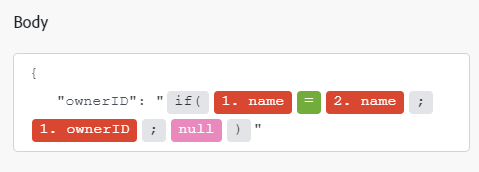Adobe Creative Cloud Libraries Modules
With the Adobe Workfront Fusion Adobe Creative Cloud Libraries modules, you can start a scenario when an element or library is created or updated. You can also upload, retrieve, archive, or list elements, or make a call to the Adobe Creative Cloud Libraries API.
If you need instructions on creating a scenario, see the articles under Create a scenario: article index.
For information about modules, see the articles under Modules: article index.
Access requirements
You must have the following access to use the functionality in this article:
| table 0-row-2 1-row-2 2-row-2 3-row-2 layout-auto html-authored no-header | |
|---|---|
| Adobe Workfront package | Any |
| Adobe Workfront license |
New: Standard Or Current: Work or higher |
| Adobe Workfront Fusion license** |
Current: No Workfront Fusion license requirement. Or Legacy: Workfront Fusion for Work Automation and Integration |
| Product |
New:
Or Current: Your organization must purchase Adobe Workfront Fusion. |
For more detail about the information in this table, see Access requirements in documentation.
For information on Adobe Workfront Fusion licenses, see Adobe Workfront Fusion licenses.
Prerequisites
To use Adobe Creative Cloud Libraries modules, you must have an Adobe Creative Cloud account.
Adobe Creative Cloud Libraries API information
The Adobe Creative Cloud Libraries connector uses the following:
Adobe Creative Cloud Libraries modules and their fields
When you configure Adobe Creative Cloud Libraries modules, Workfront Fusion displays the fields listed below. Along with these, additional Adobe Creative Cloud Libraries fields might display, depending on factors such as your access level in the app or service. A bolded title in a module indicates a required field.
If you see the map button above a field or function, you can use it to set variables and functions for that field. For more information, see Map information from one module to another.

Elements
Archive an Element
This action module archives an element from a library.
Get an Element
This action module returns a single element from a library.
List Elements
This action module retrieves a list of elements in a library.
Watch New Element in Library
This trigger module starts a scenario when an element is added to a library.
Watch Updated Elements
This trigger module starts a scenario when an element in a library is updated.
Libraries
Watch New Libraries
This trigger module starts a scenario when a new library is created.
Watch Updated Libraries
This trigger module starts a scenario when an existing library is updated.
Other
Make an API Call
This module makes a custom API call to the Adobe Creative Cloud Libraries API.
Upload an Asset
This action module uploads a small file asset to an existing library. Maximum file size is 1 GB.
